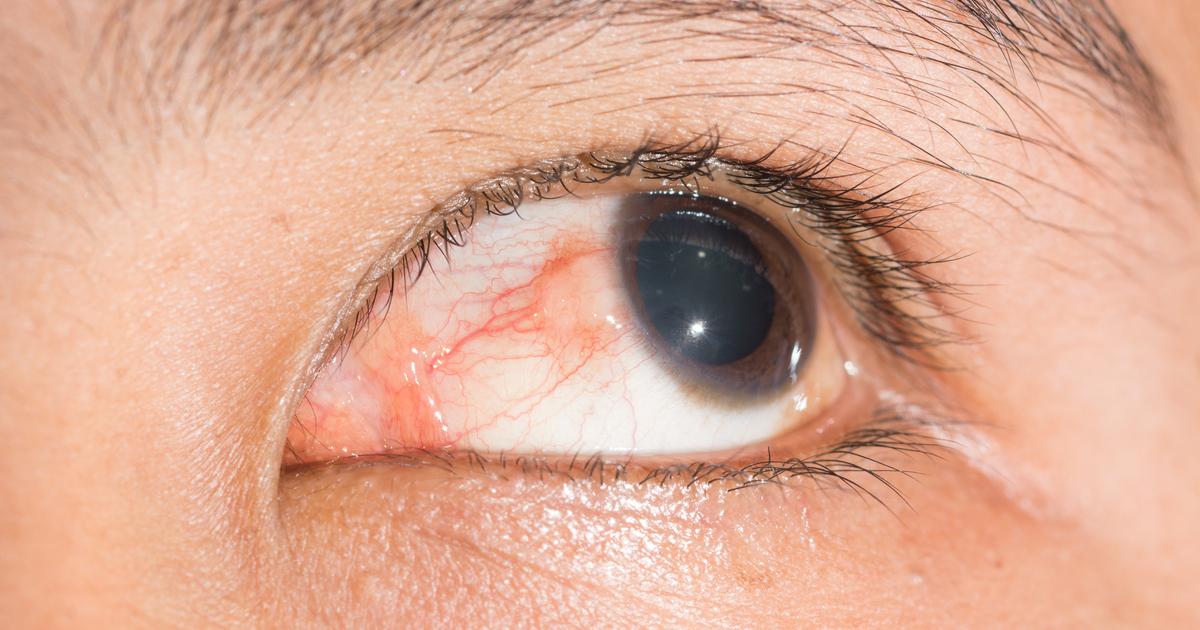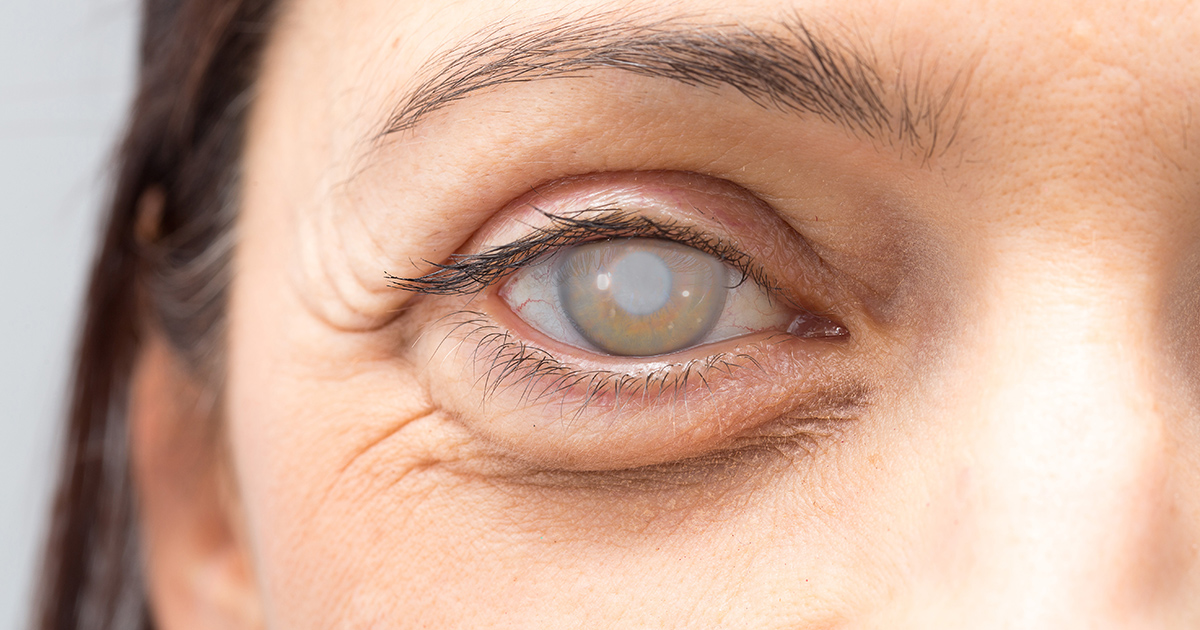What Are Eye Floaters? Plus Symptoms, Causes And Treatment
The term eye floater refers to deposits found in the vitreous body of the eye, which is the gel-like material covering the back of the eyeball. The vitreous may liquefy and bunch together to form tiny strings or balls. Individuals say eye floaters when they experience specks, lines, and spots, floating into their vision when looking at a blank surface. For most individuals, eye floaters are a minor inconvenience and aren't much of a cause for concern, but in rare cases patients find they cause a significant disruption to their vision.
Let's review the common symptoms, causes, and treatments for eye floaters now.
Symptoms

The vitreous of the eye is clear, which allows light to enter the retina easily, resulting in vision. Moving the head while experiencing eye floaters causes the bunched pieces to move and sometimes cast a shadow on the retina, which explains why eye floaters occasionally affect vision.
Eye floaters are also described as eye spots, black spots, strings, cobwebs, or specks. If the eye floaters appear as lines, they can be thin, thick, or even squiggly. They shift as the eyes do, though they do not follow this movement exactly and may still drift, particularly when the eyes are still.
Continue reading for more on the appearance of eye floaters and how to recognize them.
Patterns And Appearance

Eye floaters occur at random in one or both eyes, and the density and pattern may vary within each eye as well as over time. Unfortunately, eye floaters do not disappear completely once noticed, but they can settle out of the patient's field of vision. Alternatively, the patient can adapt to their presence, and their brain will thus begin to filter them out. Eye floater patterns differ among patients as some may only see one or two, whereas others can see hundreds. An increase of floaters accompanied by flashes of light is a medical emergency and should receive medical attention immediately.
So what causes eye floaters in the first place? Keep reading to find out.
Old Age

The major reason patients experience eye floaters is old age. As individuals age, the vitreous around the eye gradually liquefies in a process called syneresis. These often come in pockets, which are what patients often notice as eye floaters, within the regular gel-like nature of the vitreous.
Posterior vitreous detachment, another condition causing eye floaters in old age, occurs when the collagen fibers start to condense and cause the vitreous to pull away from the back of the eye. This is considered normal as patients age, but may result in a retinal tear or complete detachment.
Learn more about the causes and risk factors of eye floaters now.
Diabetic Retinopathy

Patients who have diabetes are at a higher risk of retinopathy, where the capillaries in their retinas become leaky and allow the blood and its contents into the retina, resulting in swelling. Diabetic retinopathy puts individuals at a higher risk for eye floaters because of the stress placed on their retinas and the potential for hemorrhage. Cellular material such as red blood cells or white blood cells due to hemorrhage and inflammation can cause floaters. Hemorrhages may occur as a result of diabetic retinopathy, injury, eye surgery, or retinal tear through a blood vessel.
Reveal the next risk factor of eye floaters now.
Nearsightedness

Nearsightedness causes the patient's eyes to lengthen, resulting in more changes to the vitreous. Ultimately, this increases the patient’s risk of developing eye floaters, and often the number of floaters they experience as well. Nearsightedness can be quite frustrating for individuals to deal with, but thankfully there are quite a few ways this condition can be managed, such as wearing glasses. While the vitreous of the eye can still change, treating nearsightedness as early and as effectively as possible can help reduce the patient's risk of developing eye floaters.
Get to know more causes and risk factors of eye floaters now.
Infection And Injury

Various eye infections and injuries to the eye can also increase an individual's risk of developing eye floaters, even if it’s only temporarily. Eye injuries and infections can cause swelling, negative impacts on vision, pressure on certain portions of the eye, and more. Any or even all of these can make eye floaters appear in the eye, even if it turns out to be a temporary reaction, such as blinking away spots in vision after looking directly at bright lights for a short period.
Of course, there are some serious causes of eye floaters. Get to know some of these now.
Uveitis

Uveitis is a condition in which the middle layer of the eye, called the uvea, swells. The uvea is responsible for supplying blood to the retina, which is the part of the eye that views images and send them to the brain. This condition can be the result of both infectious causes as well as non-infectious ones. In many instances, the cause of uveitis is unknown and occurs in healthy adults, but it can also occur due to autoimmune disorders, serious infections, toxin exposure, or trauma to the eye. Aside from eye floaters, other symptoms of uveitis include pain, blurred vision, sensitivity to light, and severe redness in the eye.
Reveal another serious cause of eye floaters now.
Retinal Detachment

As its name suggests, retinal detachment is a condition where the retina detaches from the back of the eye. The result of this happening is a loss of vision. This loss of vision can be either total or partial, depending on the extent of the detachment. It is crucial to note the cells of the retina may be severely deprived of oxygen when it is detached from the rest of the eye. It is largely because of this, and if patients experience sudden changes in vision, that retinal detachment is considered a medical emergency.
One of the sudden and severe changes in vision to watch for when it comes to retinal detachment is eye floaters. When retinal detachment is the cause, eye floaters will appear suddenly and in great numbers.
Read about more potential causes of eye floaters now.
Bleeding In the Eye

An individual who has bleeding in the eye can see eye floaters as a result. Bleeding or hemorrhage into the vitreous can be caused by many factors including eye injury, brain bleed, obstructed blood vessels in the eye, diabetic neuropathy, posterior vitreous detachment, and sickle cell disease. In healthy individuals, light is taken in by the cornea or transparent layer on top of the pupil and iris. Light is then focused and passes through the clear vitreous into the individual's retina in the back of their eye. The retina is the eye lining responsible for sensing and capturing light rays that enter the eye. The retina transcribes the light into impulses that move through more than a million nerve fibers that feed to the individual's optic nerve. The optic nerve then sends this visual information to the visual centers in the brain so they can form an image. However, this process is disrupted when there is a bleed or hemorrhage in an individual's vitreous humor. The red blood cells in the leaked blood cause holes in the light and image information that is sent to the optical nerve. The result is the appearance of eye floaters.
Uncover another cause of eye floaters now.
Certain Eye Medications

Certain eye medications injected with a syringe into the eye may cause an individual to see floaters. There are a number of conditions that warrant this type of medication delivery, including macular edema, uveitis, endophthalmitis, wet or dry macular degeneration, diabetic retinopathy, and retinal vein occlusion. The floaters are the result of two different factors involving injected medications. The syringe may contain a coating on it comprised of silicone oil. This silicone oil may disperse from the needle into the vitreous. The oil droplets then appear as floaters in the patient's vision until their body absorbs them. The other mechanism involves how the syringe is prepared before the injection of medication. A technique called priming is used to help reduce the risk of air bubbles being injected into the tissue along with the medicine. When air bubbles are injected into the vitreous, they may appear in the patient's vision as floaters. While priming the syringe cannot prevent air bubbles, it reduces the chance of resulting floaters.
Continue reading to reveal another cause of eye floaters now.
Cataract Surgery Complications

A patient's floaters can be the result of one of many possible cataract surgery complications. After an individual has cataract surgery to remove their cataracts and replace their lens, there are certain biochemical changes that happen in the vitreous gel. Individuals who have surgery to remove their cataract that involves the opening up of their posterior lens capsule are more likely to experience these vitreous changes. These changes can cause the vitreous gel to shrink in volume and slowly pull itself away from the patient's retina. This condition is called posterior vitreous detachment. Floaters are a common symptom that occurs in individuals who are affected by posterior vitreous detachment. The floaters from this condition usually resolve over several months if the vitreous does not cause a blood vessel tear or a retinal tear. Floaters are often already present in the vision of some patients who have cataracts. The surgical removal of the cloudy cataract and lens replacement can cause an individual to be able to see the pre-existing floaters when they were previously impeded by the cataract.
Get to know the options for treating eye floaters now.
Treatment Options

Most patients do not require treatment as eye floaters occur naturally with aging. Some floaters are not harmful to the eyes and can gradually become less bothersome as the brain adapts to their presence in a process called neuroadaptation.
Looking up and down shifts the fluid around better than side to side movements when trying to get eye floaters out of the field of vision. However, persistent floaters that are bothersome and significantly interfere with vision, particularly when flashes are present, require medical treatment. Floaters due to traumatic injury and detachment may cause complications and often need treatment as a result.
Find out what medical treatment options are available to patients who need them now.
Diet

Since floaters are a result of aging, slowing the aging process helps reduce the problem. Consuming foods high in beta-carotene and vitamins A, E, and C, such as oranges and broccoli, are known to improve eye health. As the vitreous humor is water filled, sufficient water intake and foods rich in copper and zinc, such as nuts and shellfish, are recommended. Bodybuilding foods, such as beets and spinach, are consumed to nourish the eyes. Antioxidants can prevent and repair damage to the eyes as a result of aging.
Learn about how medications can come into play for treating eye floaters now.
Medication

Some sources report products containing iodine, vitamins, and herbs help decrease eye floaters, though none of these have been clinically tried and proven effective. In cases where an infection or inflammation cause the floaters, doctors may recommend antibiotics and anti-inflammatory medication to reduce the white blood cells. Oral and eye drop medication are not capable of reducing common types of eye floaters.
Floaters from diabetic retinopathy or retinal tear often reduce once the blood is absorbed. However, the cause of bleeding must still be addressed to prevent retinal detachment or excessive bleeding. Controlling blood sugar in patients with diabetes through diet and insulin may also lower the chances of having eye floaters, as this helps slow the progression of diabetic retinopathy.
Learn about surgery as an option for treating eye floaters now.
Surgery

Some ophthalmologists advocate for laser surgery for eye floaters. However, there is no conclusive evidence indicating this is safe and effective for floaters. During laser vitreolysis, a laser beam is projected through the pupil into the eye to large floaters, vaporizing the floaters to reduce their size or make them disappear. Laser surgery also involves significant risk such as damage to the retina.
Vitrectomy is surgery used to remove the vitreous where the eyes contain inflammatory debris or large amounts of non-clearing blood. Some floaters may persist, and there is still a chance of recurrence. This process poses significant risks including the formation of cataracts, serious infection, retinal detachment, and bleeding within the eye.
Keep reading to learn more about treating and preventing eye floaters.
Routine Eye Exams

Routine eye examinations with an ophthalmologist are encouraged to detect and diagnose various eye conditions during their early stages, which can help prevent complications such as eye floaters from occurring in the first place. Of course, sometimes eye floaters are one of the first symptoms of many eye conditions, including uveitis. If this is the case, routine eye exams can still catch eye floaters and help the doctor diagnose the underlying problem before it causes last issues with the patient’s vision. In all instances, though, routine eye examinations are necessary for promoting eye health and handling eye floaters in all forms.